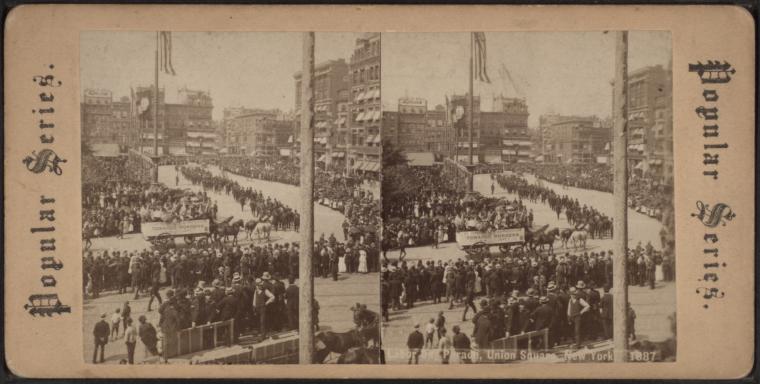
Figure 1 – Classic stereo image showing the Labor Day Parade on Union Square, in New York, City in 1887, from the Robert N Dennis collection of stereoscopic views in the New York Public Library. Scanned image from the Wikimedia Commons and in the public domain.
Today is Labor Day 2013; so I thought that I would start this post with a vintage stereo photograph of the 1887 Labor Day rally at Union Square in New York City. It is important, I think, to remember that Labor Day was not meant to celebrate the end of summer, nor was it meant to be a day to flock the stores in search of bargains. Labor Day was meant to celebrate Labor, the people who physically built and created what makes nations economically great.
The term “Labor Day” always reminds me of the slaves day off in Cecille B. DeMille’s epic film “The Ten Commandments.” The origins of a Labor Day In the United States is just a bit obscure. Some credit a machinist named Mathew Maguire, who first proposed in 1882 the holiday, while serving as secretary of the Central Labor Union, or CLU of New York. Others credit Peter J. McGuire of the American Federation of Labor as being the first to suggest it in May 1882 after he saw the annual labor festival held in Toronto, Canada. Oregon was the first state to make it a holiday on February 21, 1887.
By 1894, thirty states celebrated Labor Day, when congress unanimously voted to create a national holiday in response to the deaths of workers at the hands of the US military during the Pullman strike and it was hastily signed into law by President Grover Cleveland.
The Pullman strike was a complex and truly pivotal point in the history of labor. It must be remembered that the railroads were quintessential in the building of America economically in the nineteenth century. George Pullman in building the Pullman Company set out to create a model industry and community. The Great Panic of 1893 caused a large drop in Pullman Company revenues and Pullman unilaterally imposed lower wages but made no adjustments in the rents that he charged workers. The Pullman workers went on strike and were supported by the American Rail Union, under Eugene V. Debs, which refused to pull trains with Pullman Cars. The Railroad Brotherhoods and the American Federation of Labor supported the General (Railroad) Managers Association and opposed the strike. The federal government secured a federal court injunction against the union, Debs, and the top leaders, based on interference with the transport of the US mail. When the strikers refused to comply. President Cleveland ordered Federal Troops to enforce the injunction.
What many forget today is how deeply embedded the rail interests were in the US government and the important role played by American unions in creating a viable and vibrant middle class. There is a pendulum to public perception about labor, and in the twenty-first century the world has become truly global. I do not mean to politicize Hati and Skoll. But I would suggest that it is worth thinking about Labor Day and the iconic nineteenth century image shown in Figure 1 in the context of other haunting images that we have spoken about: Lisa Kristine’s photographs of slavery in the modern world, the Triangle Shirtwaist Factory fire, and of this May’s Garment Factory Collapse in Bangladesh. Abuse will always occur in the absence of counter balancing power. At the risk of sounding cliché, I have to echo the words of George Santayana that: “Those who do not read history are doomed to repeat it.“
